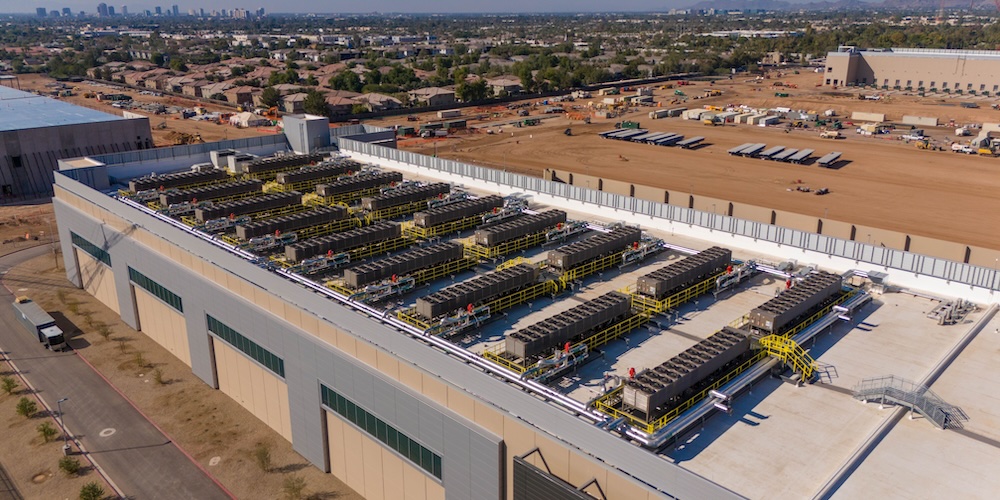— 6 min read
Construction Scheduling: An Essential Guide
Last Updated Apr 28, 2025
Last Updated Apr 28, 2025

Every successful construction project begins with a solid plan, and at its core lies an effective construction schedule. From breaking ground to final handover, staying on time and within budget depends on maintaining a clear, structured view of what needs to happen, when and by whom. Understanding construction scheduling - its importance and creation - is vital for any successful build.
Table of contents
What is a Construction Schedule?
A construction schedule outlines the sequence and timing of activities involved in a building project from start to finish. It serves as a roadmap for all stakeholders, helping teams coordinate tasks, allocate resources efficiently, and track progress. A well-structured schedule accounts for task dependencies, labour availability, materials delivery, and potential delays. Construction professionals often create these schedules using Gantt charts or critical path method (CPM) software, with emerging technologies increasingly enhancing their effectiveness.
Why Construction Schedules Matter
In construction, time directly impacts costs. A well-crafted schedule underpins the smooth operation of every project phase. Without one, even minor delays can cascade into significant problems, additional costs, and strained on site relationships. Here's how construction schedules help:
- Ensure timely completion: With a clear timeline, teams stay focused, anticipate delays, and maintain project momentum.
- Optimise resource management: Schedules direct labour, materials, and equipment precisely where needed, minimising idle time and preventing overbooking.
- Enhance coordination: They bring structure to complex builds by ensuring trades and subcontractors know their exact timing and locations.
- Monitor progress: Live schedules provide real-time visibility into project development, enabling teams to identify delays early and take corrective action.
- Lower costs: Through improved planning and reduced rework, schedules significantly decrease the risk of cost overruns.
- Create better site conditions: A structured sequencing approach improves site conditions, reduces trade conflicts, and produces better outcomes.
- Support dispute resolution: Well-documented schedules provide clarity and accountability if disagreements arise.
Overall, a thoughtfully developed construction schedule serves as an essential project management tool that keeps everyone aligned, informed, and working towards common goals.
Creating a Construction Schedule: Step-by-Step Approach
Developing an effective construction schedule requires building from the ground up with clear planning, structured tasks, and realistic timelines. Whether for a small project or a multi-phase development, the following steps create a schedule that supports delivery and team coordination:
Define the Project
This initial stage involves outlining the scope, location, client requirements, and key objectives. These elements form the foundation for the complete schedule.
Break the Project Down
Using a Work Breakdown Structure (WBS) or task list divides the project into manageable sections - such as enabling works, groundworks, structural frame, MEP installation, and fit-out. Including as much detail as possible helps avoid ambiguity later.
Estimate Task Durations
For each task, realistic completion time estimates should consider working hours, trade availability, and potential risks (e.g. weather delays or procurement lead times).
Establish Start and End Dates
Once durations are assigned, tasks can be positioned within the timeline. Calendars should reflect non-working days, including weekends and bank holidays.
Map Dependencies
This step identifies which tasks depend on others' completion. For instance, brickwork must finish before window installation can begin. Mapping these relationships helps prevent clashes and delays.
Confirm Project Timeline
Setting fixed overall start and end dates provides a framework and aligns stakeholder expectations regarding delivery timelines.
Mark Key Milestones
Including critical decision points, approvals, and handover stages creates effective milestones. These maintain team focus and allow progress checks without tracking every detail.
Determine the Critical Path
Highlighting the sequence of tasks directly affecting the project's completion date is essential. These critical path activities require careful management to maintain the schedule.
Effective Construction Scheduling Techniques
No single approach suits all construction scheduling needs. The appropriate method depends on project size, stakeholder numbers, and required flexibility. Consider these commonly used scheduling techniques:
Gantt Charts
Perhaps the most recognisable method, Gantt charts display schedules as bar charts. Each task appears as a horizontal bar across a timeline, making it easy to identify durations, overlaps, and dependencies at a glance.
Best for: Both short and long-term projects. Gantt charts offer simplicity in reading and updating, while visualising task progress and sequencing.
Many digital tools can help build and update Gantt charts in real time, offering live connections between tasks and integrated resource tracking.
Critical Path Method (CPM)
CPM is a data-driven technique that calculates the shortest time needed to complete a project. It identifies the critical path - the chain of tasks directly affecting the overall timeline - and flags delays that could disrupt the programme.
Best for: Large or complex builds where timing is crucial and delays carry significant financial consequences.
Programme Evaluation and Review Technique (PERT)
PERT builds on CPM by incorporating uncertainty. Rather than fixed durations, it uses optimistic, most likely, and pessimistic estimates to calculate average timelines.
Best for: Projects with high uncertainty levels or where exact durations are difficult to predict.
Line of Balance (LOB)
This technique typically applies to repetitive or multi-unit projects, such as housing developments or modular builds. It tracks activity progression rates across different units or locations, facilitating smooth resource movement from one unit to the next.
Best for: Projects with repeated activities (e.g., flats, hotel rooms, or floor-by-floor progress in high-rise buildings).
Each method offers distinct advantages, and many project teams combine techniques depending on the project stage. While Gantt charts often facilitate day-to-day communication, CPM and LOB can provide deeper insights for more complex builds.
Leveraging Technology in Construction Scheduling
Construction programme management has evolved far beyond whiteboards and spreadsheets. Today's scheduling tools address real-world complexities, integrating features like live updates, trade coordination, and resource planning. Here's how digital solutions enhance modern construction scheduling:
Live Updates and Collaboration
Construction schedules constantly evolve. Cloud-based tools allow project teams to update timelines in real time from any location - site, office, or remote - ensuring everyone works from the latest plan.
Mobile Site Access
Many platforms offer mobile-friendly schedule views, enabling supervisors and subcontractors to check upcoming tasks, report progress, and flag issues directly from the site.
Automatic Task Linking
When tasks depend on one another, smart scheduling tools automatically adjust downstream timelines when changes occur. Some even send alerts when tasks risk delay.
Resource and Material Tracking
Digital schedules often include resource-planning capabilities, allowing users to assign labour, equipment, or deliveries to each task and identify potential conflicts early.
Integrated Project Management
Advanced platforms connect scheduling with cost tracking, document control, and quality assurance in one system. This reduces silos, improves coordination, and clarifies overall project health.
Templates and Workflows
Some tools allow users to save templates for common project types, phases, or sequencing logic, maintaining consistency across different builds.
Building Success Through Effective Scheduling
A well-structured construction schedule forms the foundation of successful building projects. From enhancing on site coordination to reducing delays and controlling costs, an effective schedule provides a comprehensive programme that structures the entire project. Regardless of size, the principles remain consistent: break down the work, map the timeline, allocate resources wisely, and update in real time. With the right approach and tools, construction schedules drive progress, productivity, and performance throughout the project lifecycle.
Categories:
Tags:
Written by
Nicholas Dunbar
33 articles
Nick Dunbar oversees the creation and management of UK and Ireland educational content at Procore. Previously, he worked as a sustainability writer at the Building Research Establishment and served as a sustainability consultant within the built environment sector. Nick holds degrees in industrial sustainability and environmental sciences and lives in Camden, London.
View profileReviewed by
Zoe Mullan
Zoe Mullan is an experienced content writer and editor with a background in marketing and communications in the e-learning sector. Zoe holds an MA in English Literature and History from the University of Glasgow and a PGDip in Journalism from the University of Strathclyde and lives in Northern Ireland.
View profileExplore more helpful resources

Construction Management Software: Essential Tools for Modern Building Projects
Today’s construction projects face tighter timelines, rising costs, and increasing compliance pressures. Teams must juggle numerous variables while communicating across multiple job sites, making traditional tools increasingly inadequate. Fortunately, construction...

Building for Big Data: An Industry-Wide Challenge to Innovate
The demand for innovative and efficient data centres is skyrocketing. From powering cloud computing and the exponentially growing use of artificial intelligence to supporting the ever-growing internet of things (IoT),...

Building the Ideal Project Team for Data Centre Construction
The digital age has ushered in an era of unprecedented data consumption, fuelling a seemingly insatiable demand for data centres. These complex facilities are driving a construction boom, placing immense...

Gantt Charts: Visual Roadmaps for Construction Success
In the complex world of construction, even well-planned schedules can quickly slip. From overlapping trades to shifting delivery dates, the best-laid plans often unravel. This is precisely why construction Gantt...